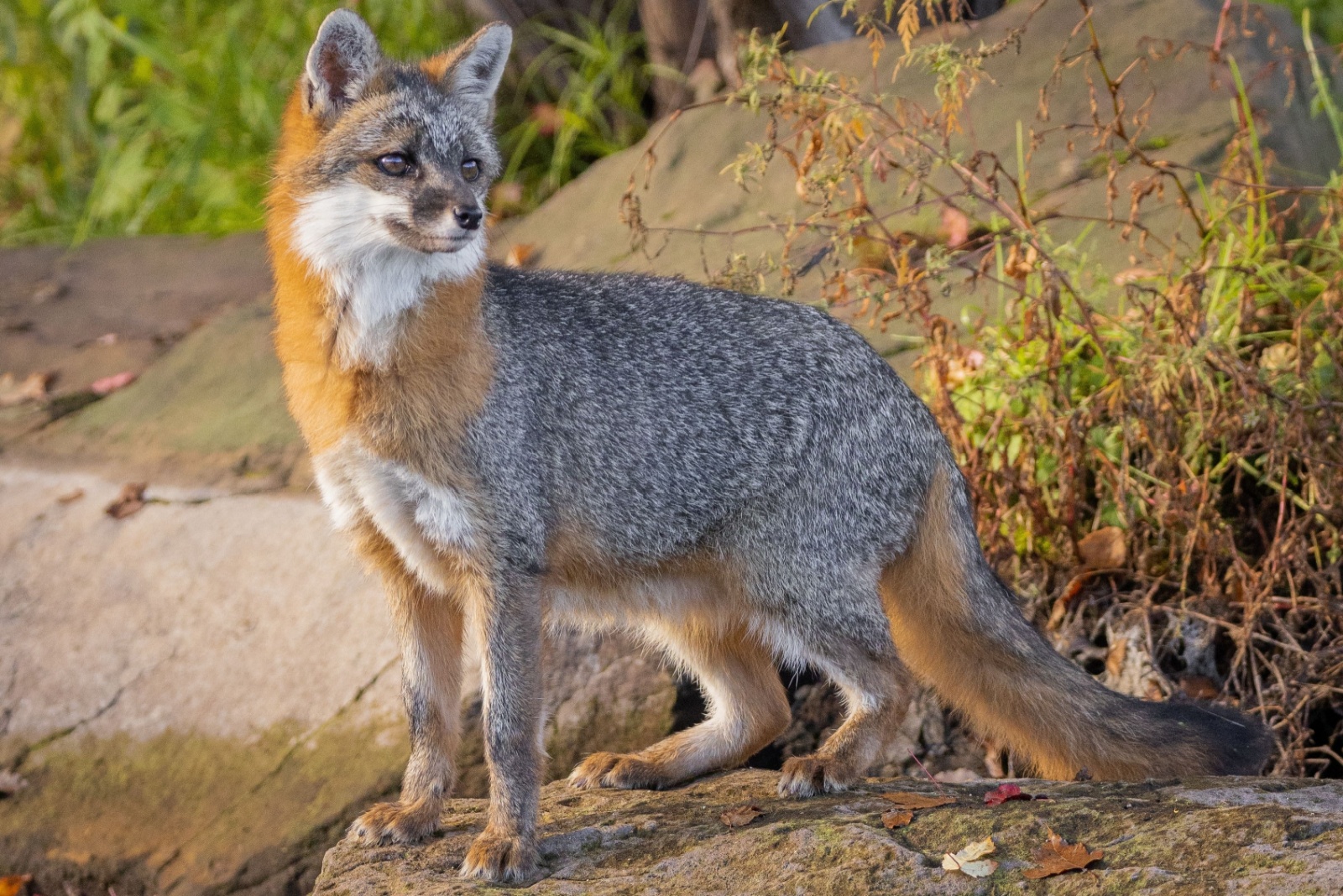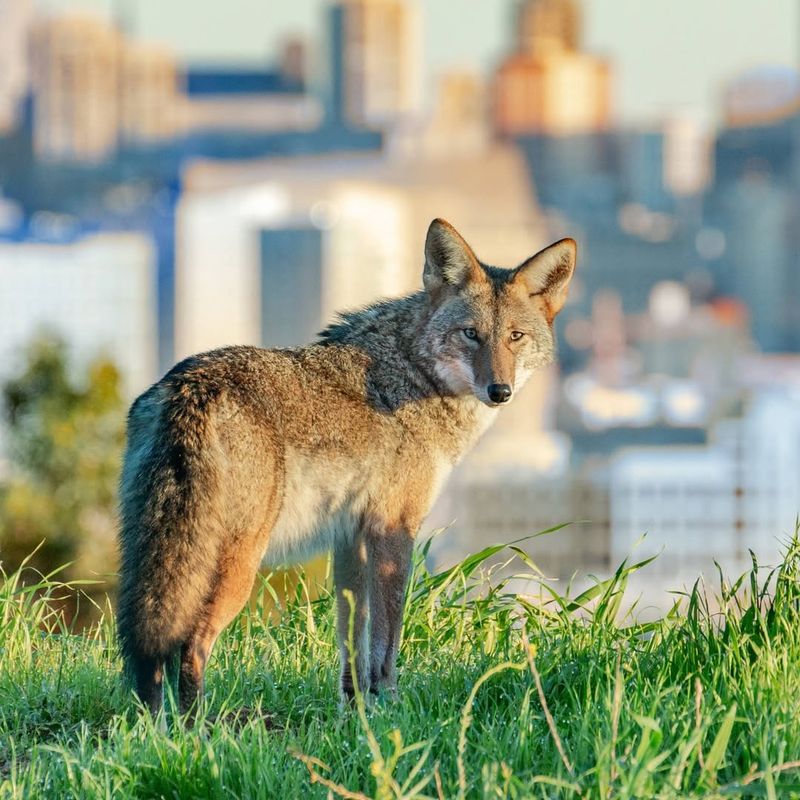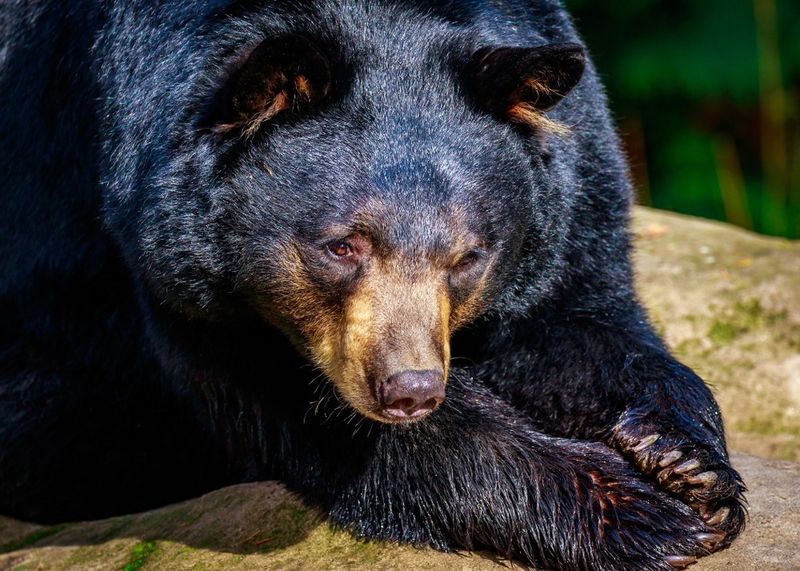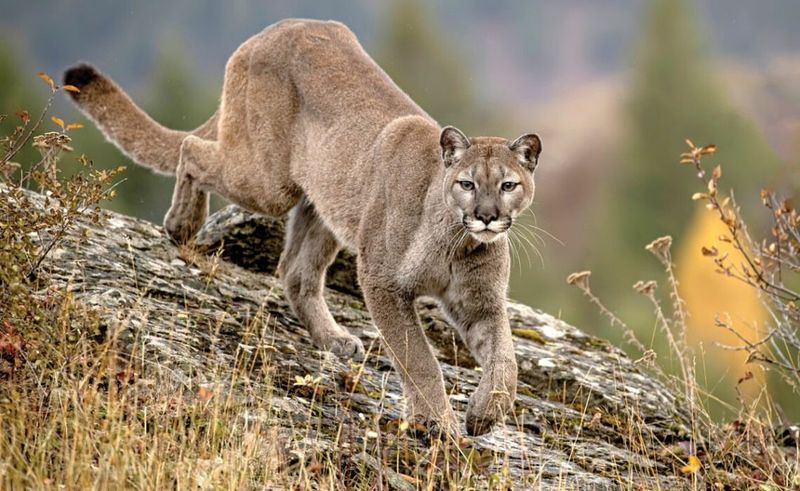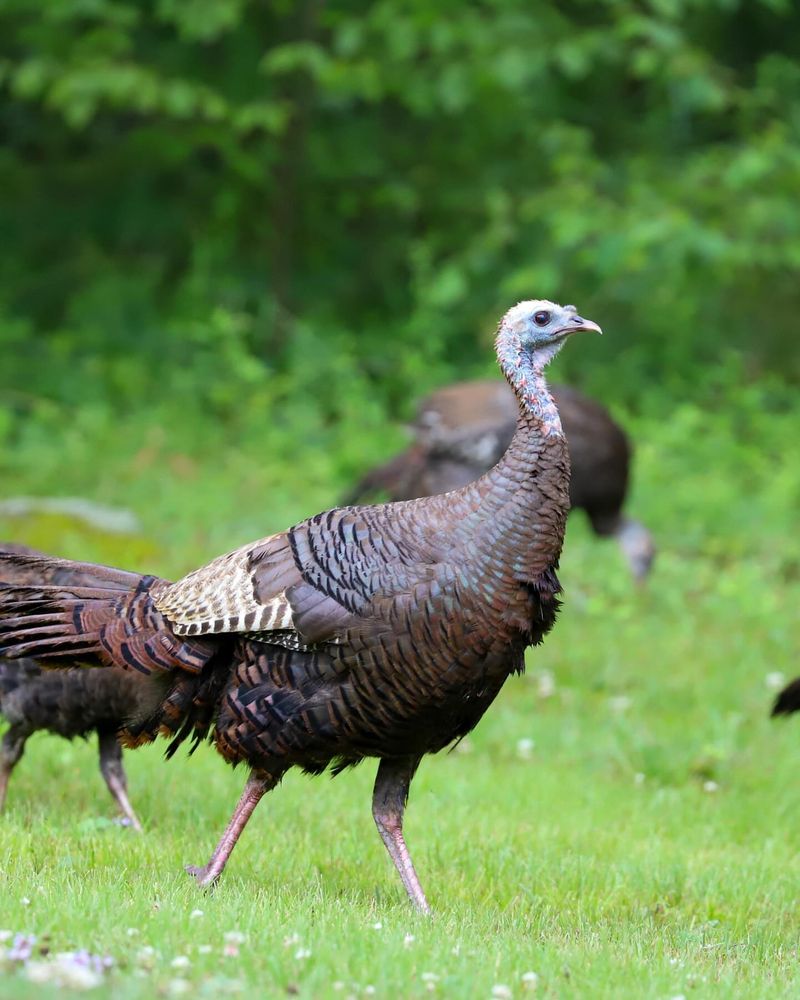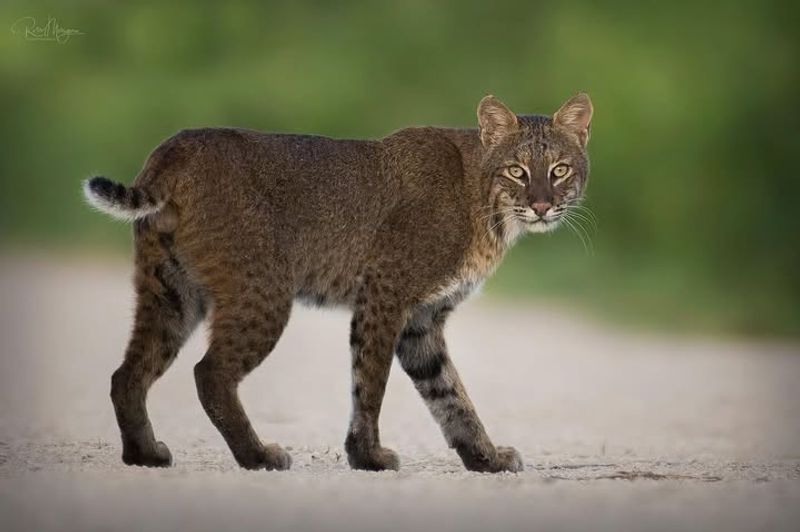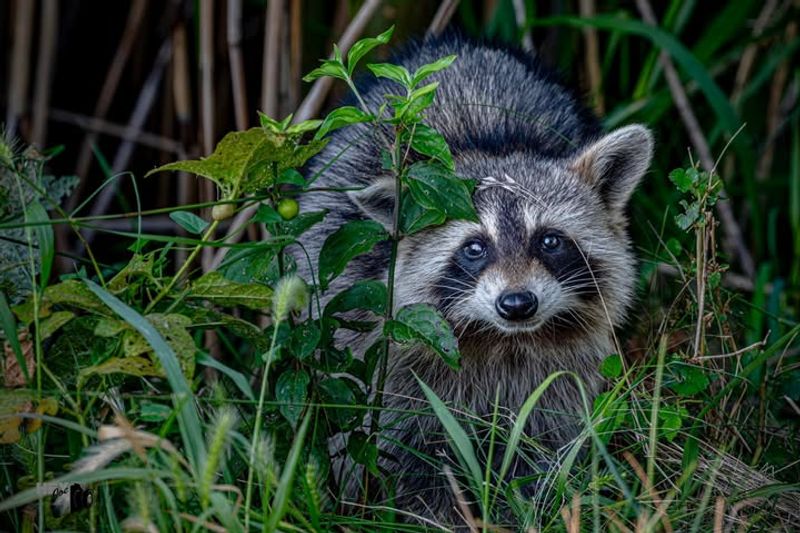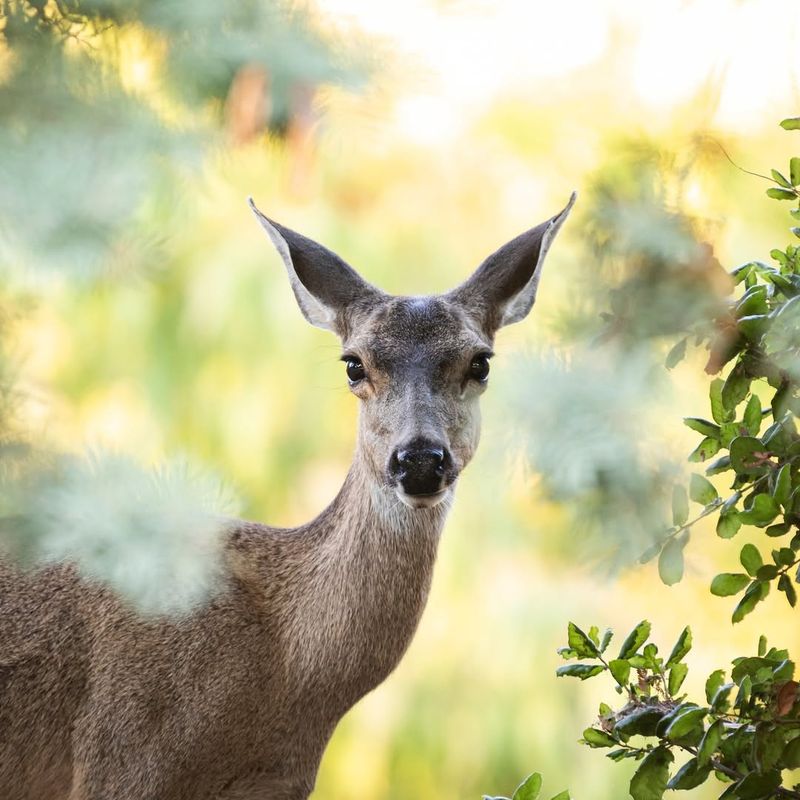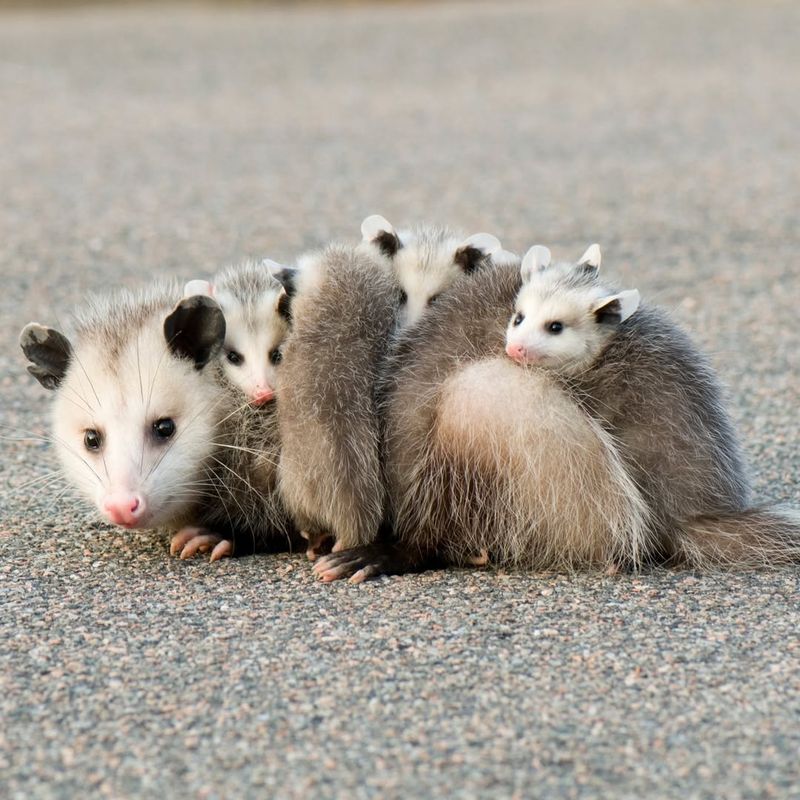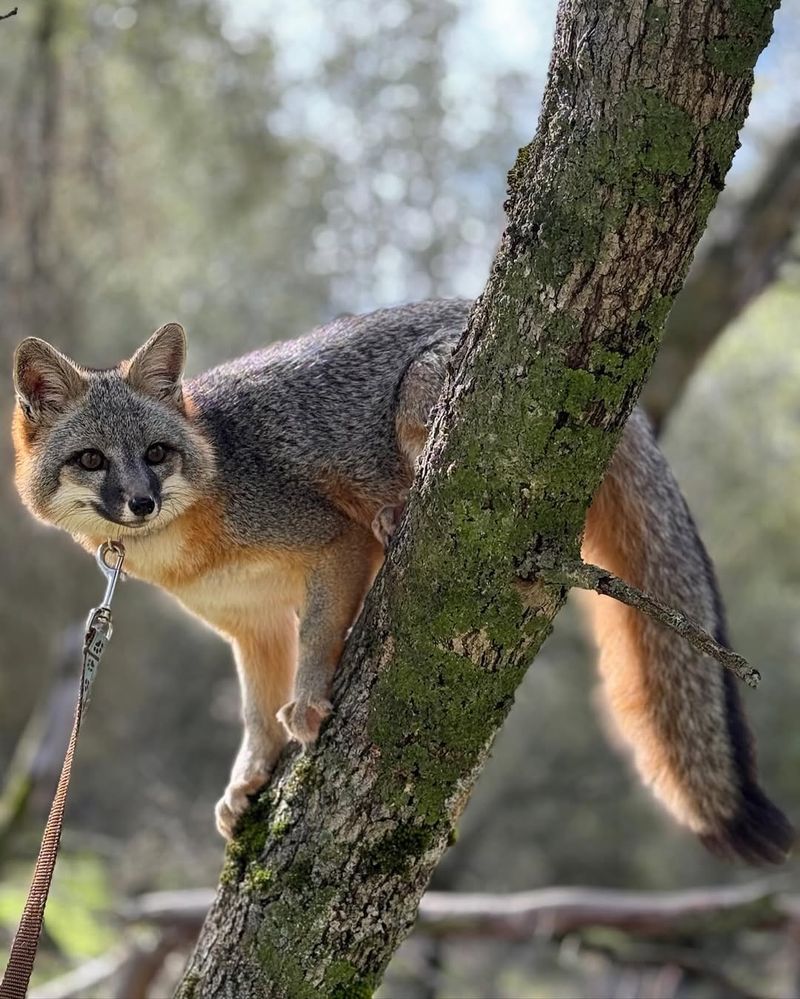California’s expanding suburbs and shrinking wild spaces are bringing nature a lot closer to home. From quiet backyards to busy city streets, more wildlife is adapting to neighborhoods where food, water, and shelter are easy to find.
Some animals blend in so well you might not realize they’ve moved in until you see them on a fence line or driveway. The wild isn’t just out there anymore—it’s living right next door.
1. Coyotes
With a keen survival instinct, coyotes have mastered life in California’s cities and suburbs. Residents across Los Angeles, San Diego, and the Bay Area regularly see them hunting at dawn or dusk. They’re drawn to neighborhoods because trash, pet food, and small animals provide easy meals.
Keep your pets indoors during early morning and evening hours when coyotes are most active. Never approach or feed them, as this makes them bolder around humans. Secure your garbage cans with tight lids and bring pet food inside after feeding time to discourage visits.
2. Black Bears
Hungry black bears are venturing down from mountain forests into foothill communities searching for food. Lake Tahoe, Big Bear, and Sierra Nevada neighborhoods see these massive animals regularly, especially during summer and fall. A single bear can smell food from miles away, making unsecured trash irresistible.
Store garbage in bear-proof containers and only put bins out on collection morning. Remove fruit from trees promptly and clean your barbecue grill after every use. If you spot a bear, make yourself look big, speak firmly, and slowly back away without running.
3. Mountain Lions
California’s most elusive predator is showing up in surprising places lately. Mountain lions need large territories to hunt, and urban sprawl is pushing them into contact with people more often. Orange County, Marin County, and Santa Monica Mountains residents have captured them on security cameras.
Walk pets on short leashes and supervise children playing outside, particularly near brushy areas. Install motion-sensor lights around your property and trim back vegetation that provides hiding spots. Report sightings immediately to local wildlife authorities so they can track movement patterns and warn neighbors.
4. Wild Turkeys
Flocks of wild turkeys strut through California neighborhoods like they own the place. Oakland, Berkeley, and Davis communities have seen populations explode in recent years. Males can become aggressive during spring mating season, chasing joggers and blocking driveways with their territorial displays.
Give them plenty of space and avoid direct eye contact, which they see as challenging. Don’t feed turkeys or leave birdseed accessible, as this encourages them to stick around. Carry an umbrella or water hose to discourage aggressive birds without harming them if they approach too closely.
5. Bobcats
Spotting a bobcat feels like glimpsing a ghost because they’re incredibly secretive. San Diego County and Southern California suburbs report increased sightings as development fragments their habitat. Unlike house cats, bobcats have spotted coats, short tails, and tufted ears that make them unmistakable.
Protect small pets by keeping them indoors, especially at night when bobcats hunt most actively. Secure chicken coops with strong fencing and remove brush piles where they might den. Appreciate sightings from a distance—bobcats rarely threaten humans but deserve respect as wild predators navigating shrinking wilderness.
6. Raccoons
Those masked bandits raiding your trash aren’t just a cartoon stereotype anymore. Raccoons thrive in California cities because they’re incredibly smart and adaptable problem-solvers. They can open latches, remember solutions, and teach their young how to exploit human food sources efficiently.
Lock trash cans with bungee cords or invest in animal-proof bins to outsmart these clever critters. Seal crawl spaces and chimneys where they might nest, and trim tree branches touching your roof. If raccoons become pests, contact professional wildlife removal rather than attempting to trap them yourself, as they can carry diseases.
7. Deer
Mule deer and black-tailed deer wander through California neighborhoods munching on gardens like all-you-can-eat buffets. Communities near open space in Marin, Santa Barbara, and throughout the state see daily visits. While beautiful, deer carry ticks that spread Lyme disease and can damage landscaping overnight.
Plant deer-resistant varieties like lavender, rosemary, and California poppies if you want thriving gardens. Install seven-foot fencing around vegetable patches since deer are excellent jumpers. Check yourself and pets for ticks after spending time outdoors in areas where deer browse regularly throughout the day.
8. Skunks
Nobody wants a close encounter with a skunk, yet they’re appearing in California yards more frequently. These nocturnal animals dig for grubs and insects in lawns, creating small holes that frustrate homeowners. Their infamous spray can linger for weeks if you startle one accidentally.
Eliminate food sources by removing fallen fruit and securing pet food before nightfall. Fill in holes under decks and sheds where skunks might create dens for raising babies. Move slowly and speak softly if you encounter one—sudden movements trigger their defensive spray. Bright motion lights often discourage them from settling near your home.
9. Opossums
America’s only marsupial is becoming a common California neighbor despite looking a bit unusual. Opossums actually benefit communities by eating ticks, snails, and rodents that spread disease. Their reputation as pests is largely undeserved since they’re gentle, non-aggressive, and rarely carry rabies due to low body temperature.
Welcome these helpful creatures by tolerating their presence unless they become problematic. Secure garbage and pet food to prevent them from becoming too comfortable on your property. If one plays dead when startled, just leave it alone—it’s an involuntary response, and the animal will recover and leave once it feels safe again.
10. Gray Foxes
California’s native gray foxes are showing up in urban areas more than ever before. Unlike red foxes, gray foxes can climb trees, making them uniquely adapted to navigating neighborhoods with ease. Bay Area and Southern California residents spot them hunting rodents and rabbits near parks and green spaces.
Admire these beautiful animals from inside your home rather than approaching them outside. They’re naturally shy but may lose fear if people feed them intentionally or accidentally. Keep small pets supervised since foxes might mistake them for prey. Report injured or sick-looking foxes to wildlife rehabilitation centers for proper care and disease prevention.

